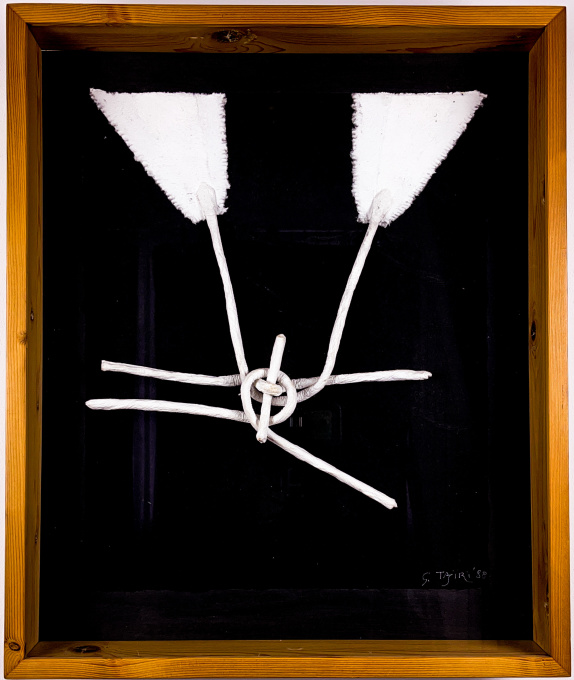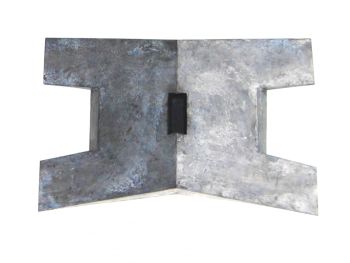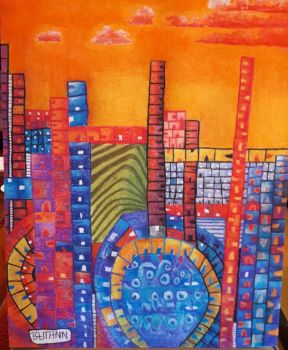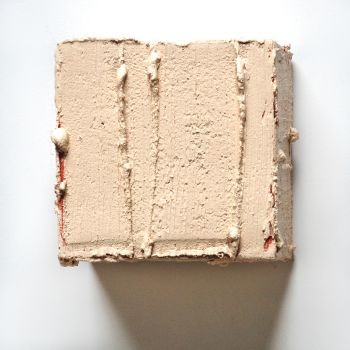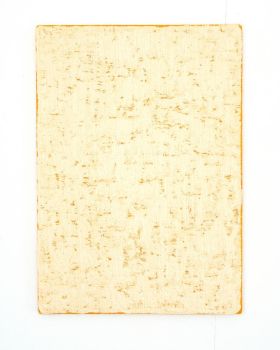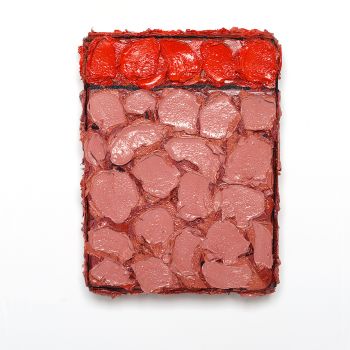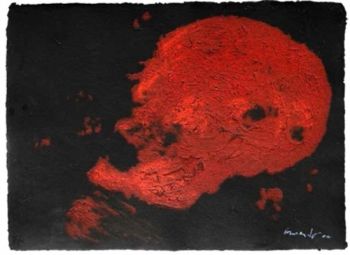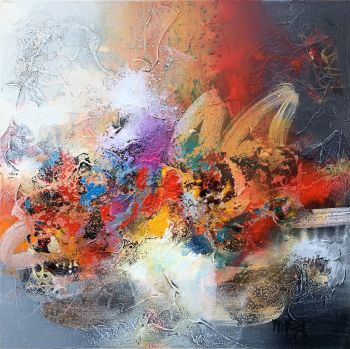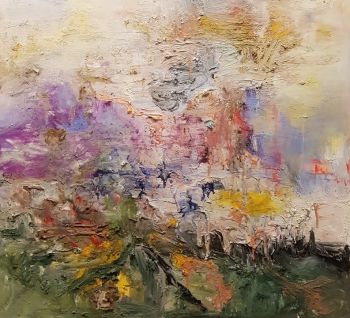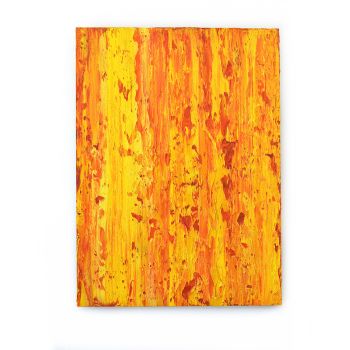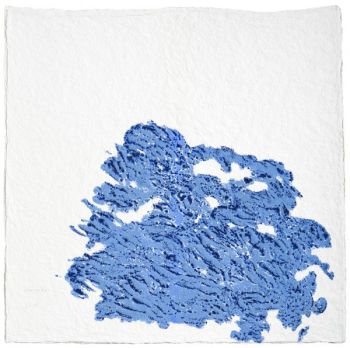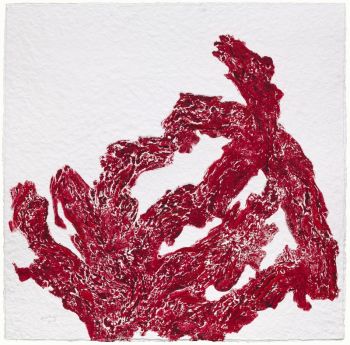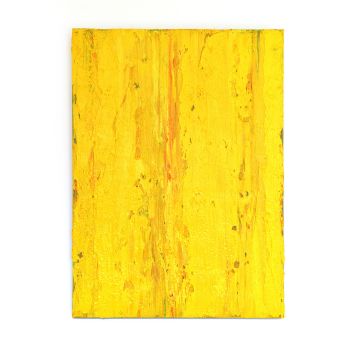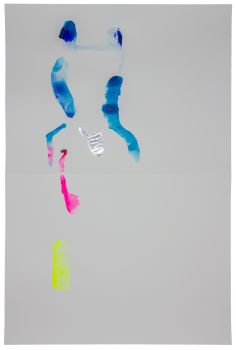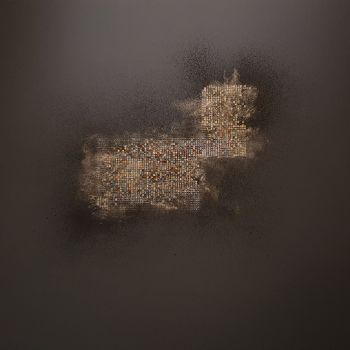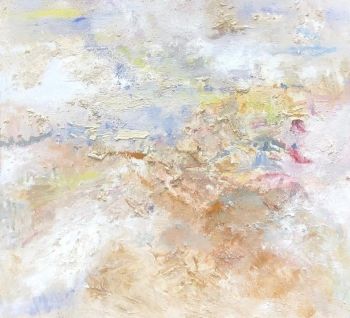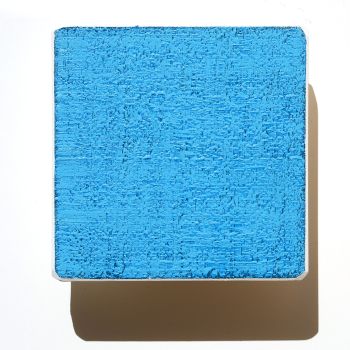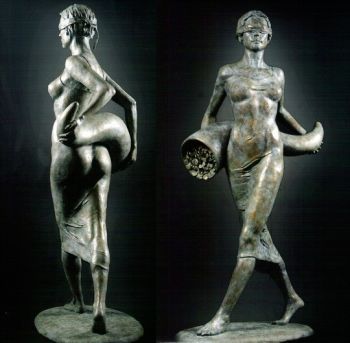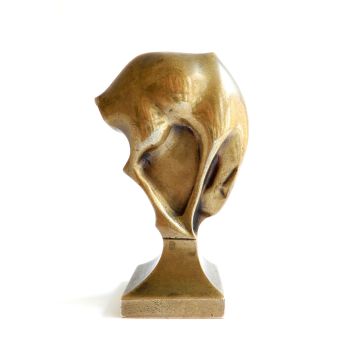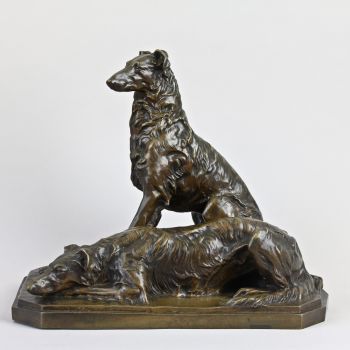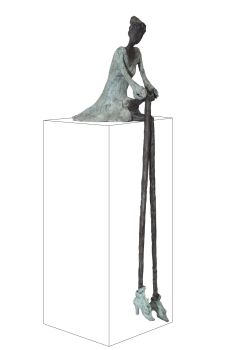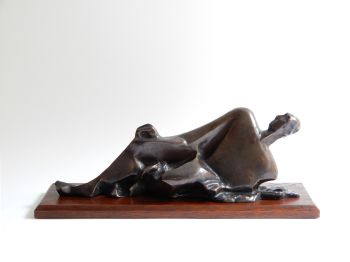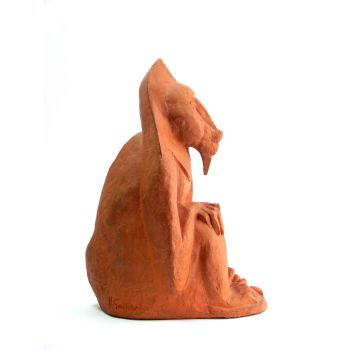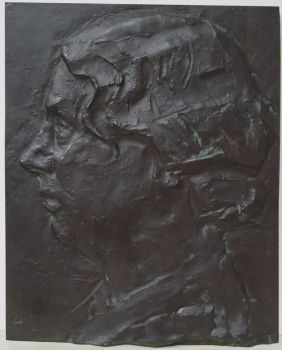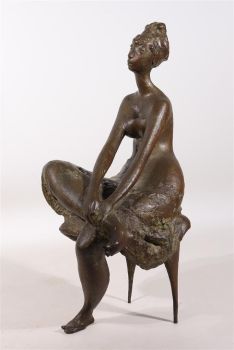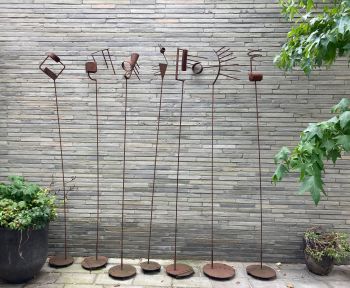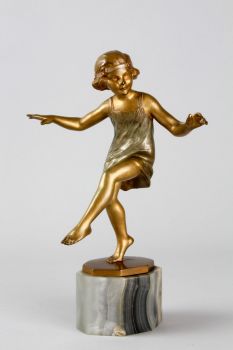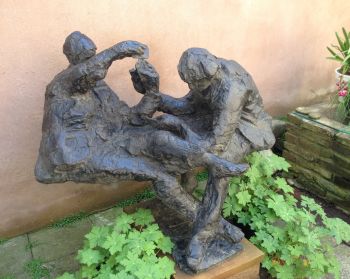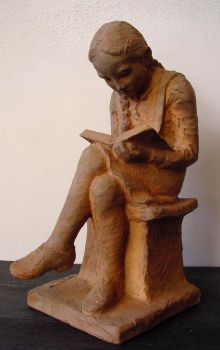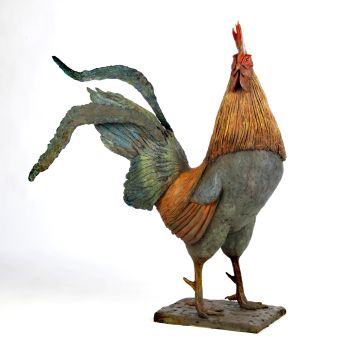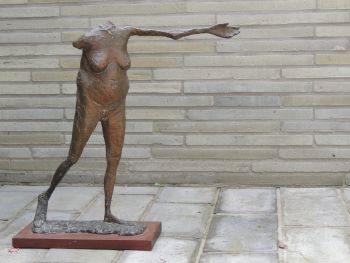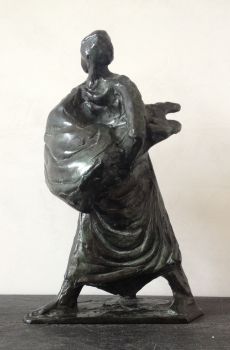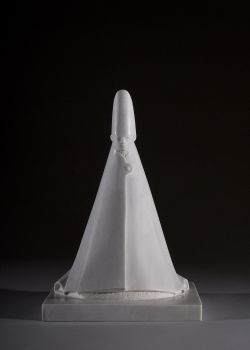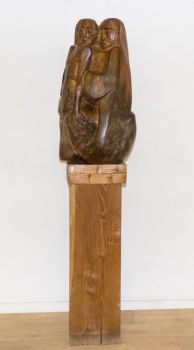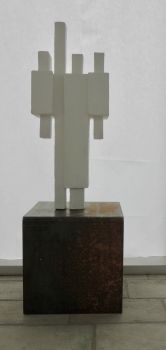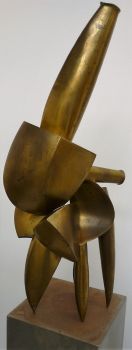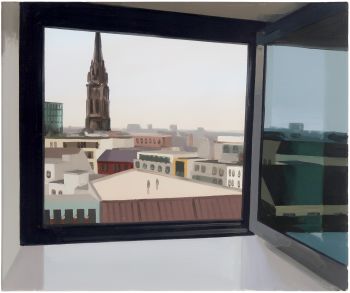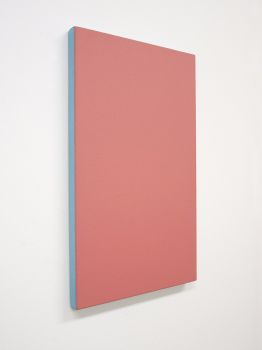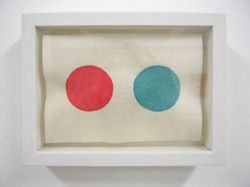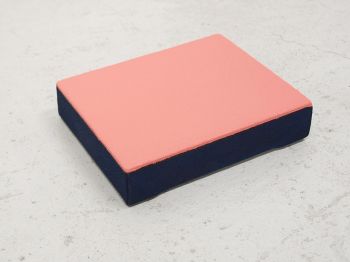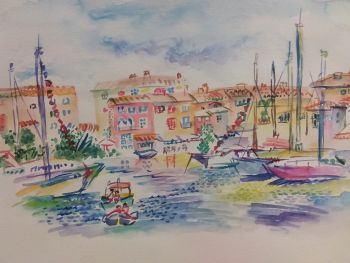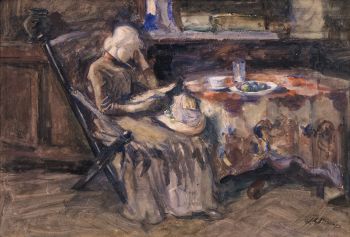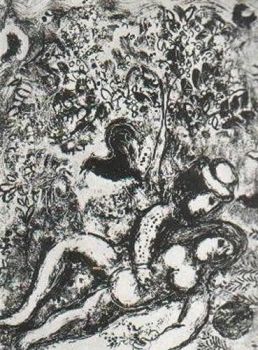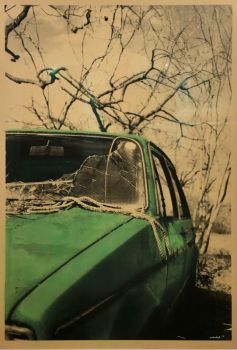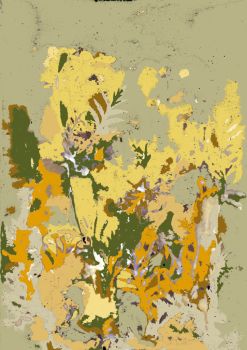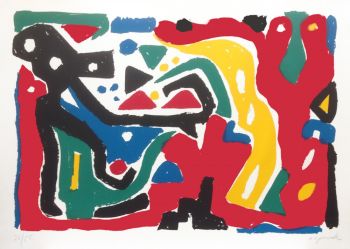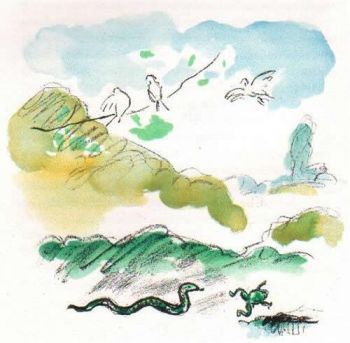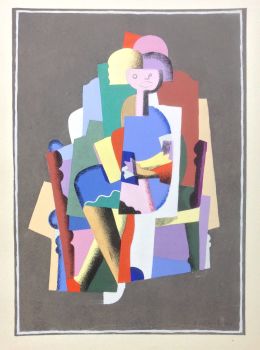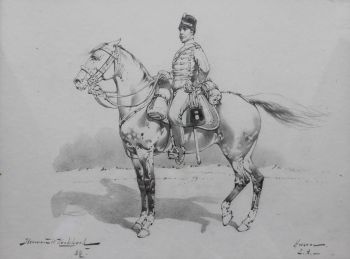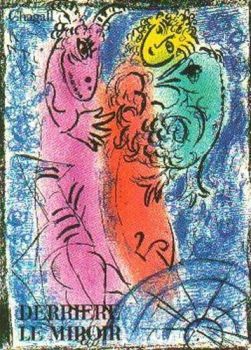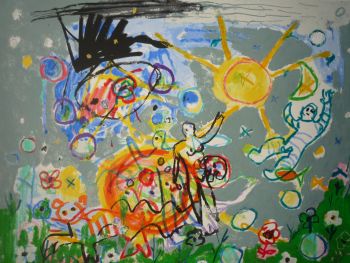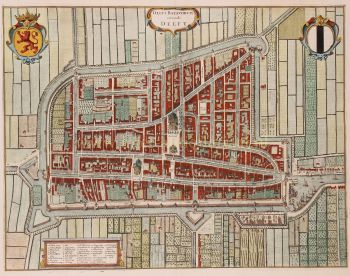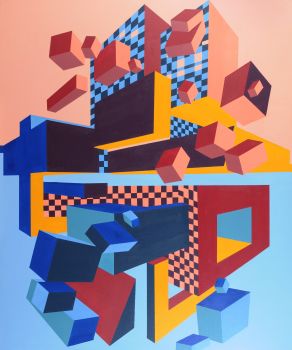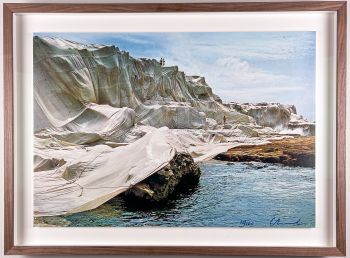“Koan” 1988 – papier-mâché / cotton on paper, original frame 1988
Shinkichi Tajiri
TextilePaperPapier-machéCotton
62 ⨯ 52 ⨯ 8 cm
ConditionVery good
Price on request
Van Kerkhoff Art
- About the artworkA unique sculpture in papier-mâché / cotton laid down on paper. In original frame. Titled, signed and dated by the artist in pencil. Labeled on the back with second signature by the artist.
About Shinkichi Tajiri
Shinkichi Tajiri (Los Angeles 1923 – Baarlo 2009) was a Dutch – American artist of Japanese descent, most known for his sculpturing work.
He received his education at the Art Institute of Chicago leaving for Paris in 1948 where he studied with Ossip Zadkine, Fernand Lèger, Académie Colarossi and the Académie de la Grande Chaumière. In Paris he came into contact with several artists of the CoBrA movement and in 1949 het participated in two exhibitions of Experimental Art (CoBrA) in the Stedelijk Museum in Amsterdam in 1949 and Museé des Beaux Arts, Liège in 1951. In 1956 he moved to Amsterdam together with his wife Ferdi Jansen – also an sculptor – whom he met while studying with Zadkine.
In the late 1950’s he exhibited with several influential Dutch artist like Wessel Couzijn and Carel Visser. In the 1960’s he was invited to represent The Netherlands at the Documenta II (1959), Documenta III (1964), Documenta IV (1968) and the 31st Venice Biennale (1962). In 1969 Tajiri was appointed professor at the Hochschule der Künste in Berlin on request by its art students, where he taught until 1989. From 1962 until his passing away in 2009 Shinkichi Tajiri lived and worked at the Castle Scheres in Baarlo in the Southern part of The Netherlands.
Tajiri was a recipient of many awards and honorary titles, most notable Officer in the Order of Oranje-Nassau, Member of the Royal Academy of Belgium and Knight in the Order of the Dutch Lion. many of his sculptures are part of museal collections ie: Rijksmuseum Amsterdam, Stedelijk Museum Amsterdam, Cobra Museum Amstelveen, Bonnefantenmuseum Maastricht and Museum Het valkhof, Nijmegen.
Signed
Signed by the artist in pencil
Signed on label by the artist (verso)
Condition
Very good original condition, original frame.
Provenance
Private collection, The Netherlands
Bought directly from the artist
Dimensions
Artwork
Height 50 cm
Width 40 cm
Frame
Height 62 cm
Width 52 cm
Depth 8 cm - About the artist
Shinkichi Tajiri, a child of first-generation immigrants to the USA from Japan, spent his childhood in Los Angeles and San Diego. Following the 1941 attack on the US airfield in Hawaii by the Japanese army, Tajiri’s family was sent to the Poston War Relocation Center, an internment camp in Arizona.
In a combination of patriotism and his wish to leave the camp, Tajiri soon volunteered for the army and joined the all-Japanese American regiment, which later became the most decorated regiment of its size in American military history. He subsequently attended the Chicago Art Institute from 1946 to 1948, also working for the sculptor Isamu Noguchi in New York.
In 1949 he moved to Paris and studied with Ossip Zadkine and Fernand Léger. Primarily a sculptor, Tajiri also made a number of award-winning films, videos, stereo and panoramic photos and works on paper.
Shinkichi Tajiri saw the war as catalyst for his becoming an artist and he regarded his imagery as a way of crystallising his war experiences. The main themes of his work are speed, erotica and violence in an ongoing confrontation with the tragedies of the Second World War and its aftermath.In 1967 and 1968 he made a series of sculptures entitled Machines as a form of protest against the violence of the Vietnam War. Machine No 7 1967–8 is a steel, aluminium, Plexiglas and chromed iron sculpture shaped like a hybrid of a fighter plane and a gun, embodying Tajiri’s experiences of the violence of war.
Are you interested in buying this artwork?
Artwork details
Related artworks
- 1 - 1 / 1
- 1 - 4 / 24
Lambertus Zijl
Portrait of Juliana, queen of the Netherlands (1948-1990)1900 - 1950
Preço em pedidoKunsthandel Pygmalion
Klaas II Mobach
Hanna Mobach, daughter of the sculptor Klaas Mobach, reading1950 - 1970
Preço em pedidoKunsthandel Pygmalion
1 - 4 / 24- 1 - 4 / 24
- 1 - 4 / 12

